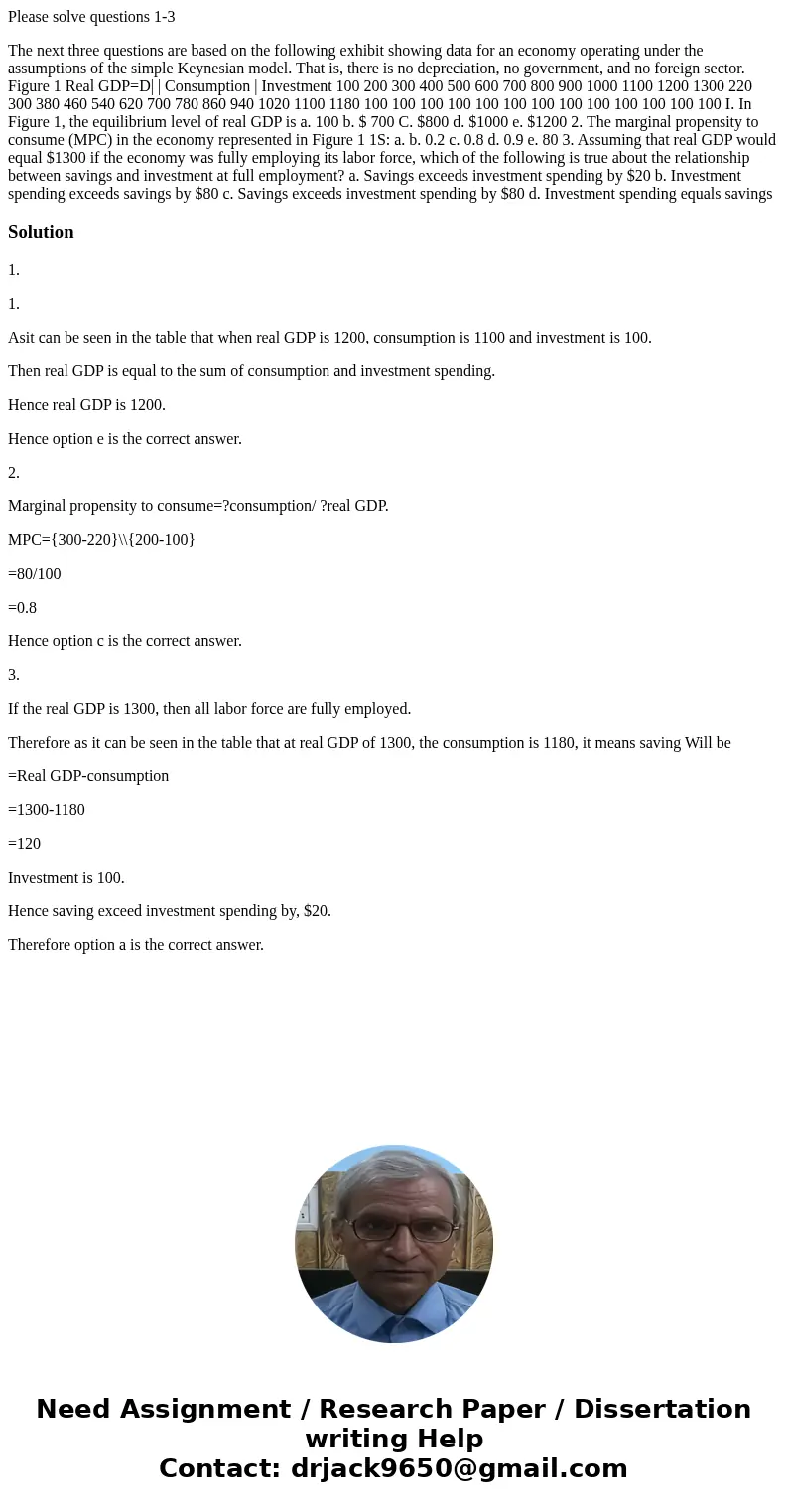Please solve questions 13 The next three questions are based
Please solve questions 1-3
The next three questions are based on the following exhibit showing data for an economy operating under the assumptions of the simple Keynesian model. That is, there is no depreciation, no government, and no foreign sector. Figure 1 Real GDP=D| | Consumption | Investment 100 200 300 400 500 600 700 800 900 1000 1100 1200 1300 220 300 380 460 540 620 700 780 860 940 1020 1100 1180 100 100 100 100 100 100 100 100 100 100 100 100 100 I. In Figure 1, the equilibrium level of real GDP is a. 100 b. $ 700 C. $800 d. $1000 e. $1200 2. The marginal propensity to consume (MPC) in the economy represented in Figure 1 1S: a. b. 0.2 c. 0.8 d. 0.9 e. 80 3. Assuming that real GDP would equal $1300 if the economy was fully employing its labor force, which of the following is true about the relationship between savings and investment at full employment? a. Savings exceeds investment spending by $20 b. Investment spending exceeds savings by $80 c. Savings exceeds investment spending by $80 d. Investment spending equals savingsSolution
1.
1.
Asit can be seen in the table that when real GDP is 1200, consumption is 1100 and investment is 100.
Then real GDP is equal to the sum of consumption and investment spending.
Hence real GDP is 1200.
Hence option e is the correct answer.
2.
Marginal propensity to consume=?consumption/ ?real GDP.
MPC={300-220}\\{200-100}
=80/100
=0.8
Hence option c is the correct answer.
3.
If the real GDP is 1300, then all labor force are fully employed.
Therefore as it can be seen in the table that at real GDP of 1300, the consumption is 1180, it means saving Will be
=Real GDP-consumption
=1300-1180
=120
Investment is 100.
Hence saving exceed investment spending by, $20.
Therefore option a is the correct answer.

 Homework Sourse
Homework Sourse